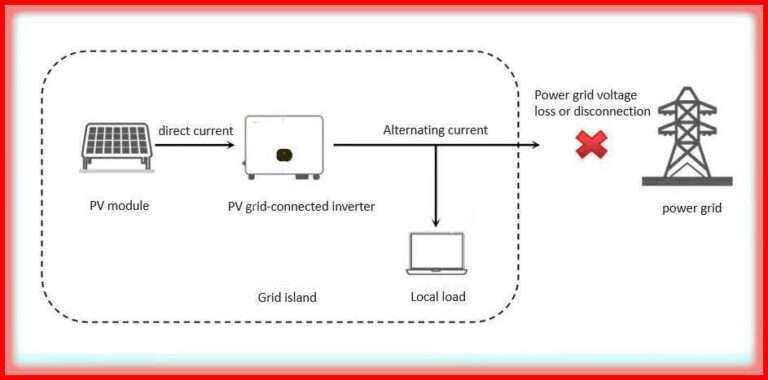Demand Factor for Residential Loads in the Philippines
The demand factor for residential loads in the Philippines is a crucial concept in electrical engineering and power distribution. Understanding this factor helps utilities, engineers, and homeowners plan for electricity usage, ensuring an efficient and stable energy supply. This article delves into the demand factor, its significance, and how it is applied in residential settings across the Philippines.
What is Demand Factor?
The demand factor refers to the ratio of the maximum demand (the highest power usage at any given time) to the total connected load (the sum of the power rating of all electrical appliances in a home). The demand factor helps utilities estimate the amount of electricity that will likely be used at peak times and design infrastructure accordingly.
For residential loads, the demand factor is typically less than 1, as not all electrical appliances in a household are used simultaneously at their full capacity. This is because some appliances are turned off or operate intermittently. By analyzing demand factors, utilities can optimize power generation and distribution, reducing waste and avoiding unnecessary infrastructure investments.
Importance of Demand Factor in Residential Loads
Understanding the demand factor for residential loads in the Philippines is essential for several reasons.
Efficient Power Distribution
By accurately calculating the demand factor, electricity distributors can ensure that they provide sufficient power to homes without overestimating the capacity needed. This prevents wastage of resources and guarantees that residential areas receive stable and uninterrupted power.
Proper Sizing of Electrical Infrastructure
Electrical infrastructure, such as transformers, wiring, and circuit breakers, must be sized appropriately to handle the maximum demand. Incorrect sizing leads to inefficiency, increased costs, and potential overloads. A good understanding of demand factors allows electrical engineers to design systems that are both cost-effective and safe.
Cost Management
For utility companies, knowing the demand factor helps in determining rates and charges for residential consumers. By understanding usage patterns, providers can set more accurate pricing models that reflect actual consumption rather than overestimating demand. This helps in offering fair electricity rates to consumers.
Compliance with Standards
The demand factor must align with local standards, ensuring safety and efficiency. The Philippines’ regulatory bodies, such as the Department of Energy (DOE) and the National Electrification Administration (NEA), provide guidelines for electricity demand calculations to promote uniformity and safety in electrical systems.
Calculating the Demand Factor for Residential Loads
To understand how the demand factor is calculated for residential loads, we need to consider the maximum demand and the total connected load.
Formula for Demand Factor

- Maximum Demand: This is the peak power usage recorded in the home during a specified period.
- Total Connected Load: This is the sum of the rated capacities of all electrical appliances and devices that could potentially be used in the home.
For example, if a household has a total connected load of 20 kW, but the maximum demand recorded during peak usage is 10 kW, the demand factor would be:

This indicates that only 50% of the total connected load is being utilized at peak demand.
Demand Factor Ranges for Residential Loads in the Philippines
For residential homes in the Philippines, the demand factor typically ranges between 0.5 and 0.7. This is due to the fact that not all appliances are used simultaneously, and some appliances may be on standby mode.
In rural areas, where homes may not have a large number of electrical appliances, the demand factor might be closer to 0.5. On the other hand, in urban areas with more electrical devices, such as air conditioning units, the demand factor could approach 0.7.
Factors Affecting the Demand Factor for Residential Loads
Several factors influence the demand factor for residential loads in the Philippines, particularly due to the diverse climates, energy consumption habits, and household appliance usage.
Climate and Weather Conditions
The tropical climate in the Philippines plays a significant role in residential electricity demand. During the hot and humid summer months, the use of air conditioning and electric fans increases substantially. This leads to higher peak demand, particularly in urban areas where such appliances are more common. The demand factor for homes with air conditioning units could be higher compared to those without.
Appliance Usage Patterns
The demand factor is also influenced by the type of appliances used in a home. Homes with multiple heavy-load appliances like refrigerators, washing machines, and electric stoves will have a higher total connected load. However, the demand factor remains lower unless all these appliances are used at the same time.
Socioeconomic Status
In wealthier households, where more electrical appliances are common, the total connected load is typically higher. This may result in a higher peak demand during specific hours. Conversely, in less affluent areas, households may use fewer electrical appliances, which reduces the demand factor.
Number of Residents
The number of people in a household impacts electricity consumption. Larger families tend to have a higher demand for electricity, especially when multiple appliances are in use at the same time. This increases the likelihood of reaching the maximum demand.
Demand Factor and Its Role in Power Generation
For electricity providers in the Philippines, accurately assessing the demand factor for residential loads is crucial in planning power generation. By forecasting peak demand periods, providers can ensure they have enough capacity to meet the needs of all consumers.
Power Generation Optimization
In the Philippines, a mix of coal, natural gas, and renewable energy sources are used for power generation. Utilities must predict when peak demand will occur to ensure the appropriate amount of energy is generated. Understanding the demand factor for residential loads helps them make these predictions more accurately, preventing power shortages or excess generation.
Load Management
Demand response programs are becoming increasingly important in managing electricity demand. Utilities can implement strategies to reduce peak demand by incentivizing consumers to use electricity during off-peak hours. Understanding the demand factor allows them to better structure these programs and manage load distribution effectively.
Related Standards for Demand Factor Calculations
In the Philippines, several standards govern the calculation of demand factors and the design of electrical systems. The National Electrical Code (NEC) and the Philippine Electrical Code (PEC) provide guidelines on how to calculate demand factors and size electrical systems.
Philippine Electrical Code (PEC)
The PEC outlines how electrical infrastructure should be sized for residential buildings. It considers factors such as the type of appliances used, the number of circuits, and the expected maximum demand. According to the PEC, residential homes must ensure that electrical systems can handle the demand during peak periods, with the demand factor helping to guide these calculations.
National Electrification Administration (NEA)
The NEA provides further guidelines on electricity distribution, especially for rural electrification projects. They recommend calculating demand factors based on actual usage data in the specific region to ensure that power distribution systems are appropriately designed.
Department of Energy (DOE)
The DOE also sets guidelines for energy efficiency and demand forecasting. They work with utilities to ensure that demand factors are accurately calculated and that energy providers have the infrastructure necessary to meet residential needs.
Conclusion
The demand factor for residential loads in the Philippines is an essential concept for electrical engineers, utility companies, and homeowners. By understanding the demand factor, better power distribution and infrastructure planning can be achieved, ensuring that electricity is available where and when it is needed most.
The demand factor plays a critical role in ensuring that the energy infrastructure in the Philippines is efficient, cost-effective, and safe. As the country continues to grow, the demand for electricity will increase, making it even more important to monitor and manage the demand factor for residential loads effectively. By adhering to national standards and considering local conditions, the Philippines can continue to provide reliable and affordable electricity to its citizens.
References:
- Philippine Electrical Code (PEC)
- National Electrification Administration (NEA) Guidelines
- Department of Energy (DOE) Energy Efficiency Standards
Follow Us on Social:
Subscribe our Newsletter on Electrical Insights to get the latest updates in Electrical Engineering.
DemandFactor, #ResidentialLoads, #PhilippinesElectricity, #NECStandards, #EnergyEfficiency, #ElectricalDemand, #LoadCalculation, #PhilippinesEnergy, #DemandFactorAnalysis, #ElectricityConsumption, #HomeEnergyUse, #EnergyManagement, #ResidentialPower, #ElectricalEngineering, #EnergyDemand



